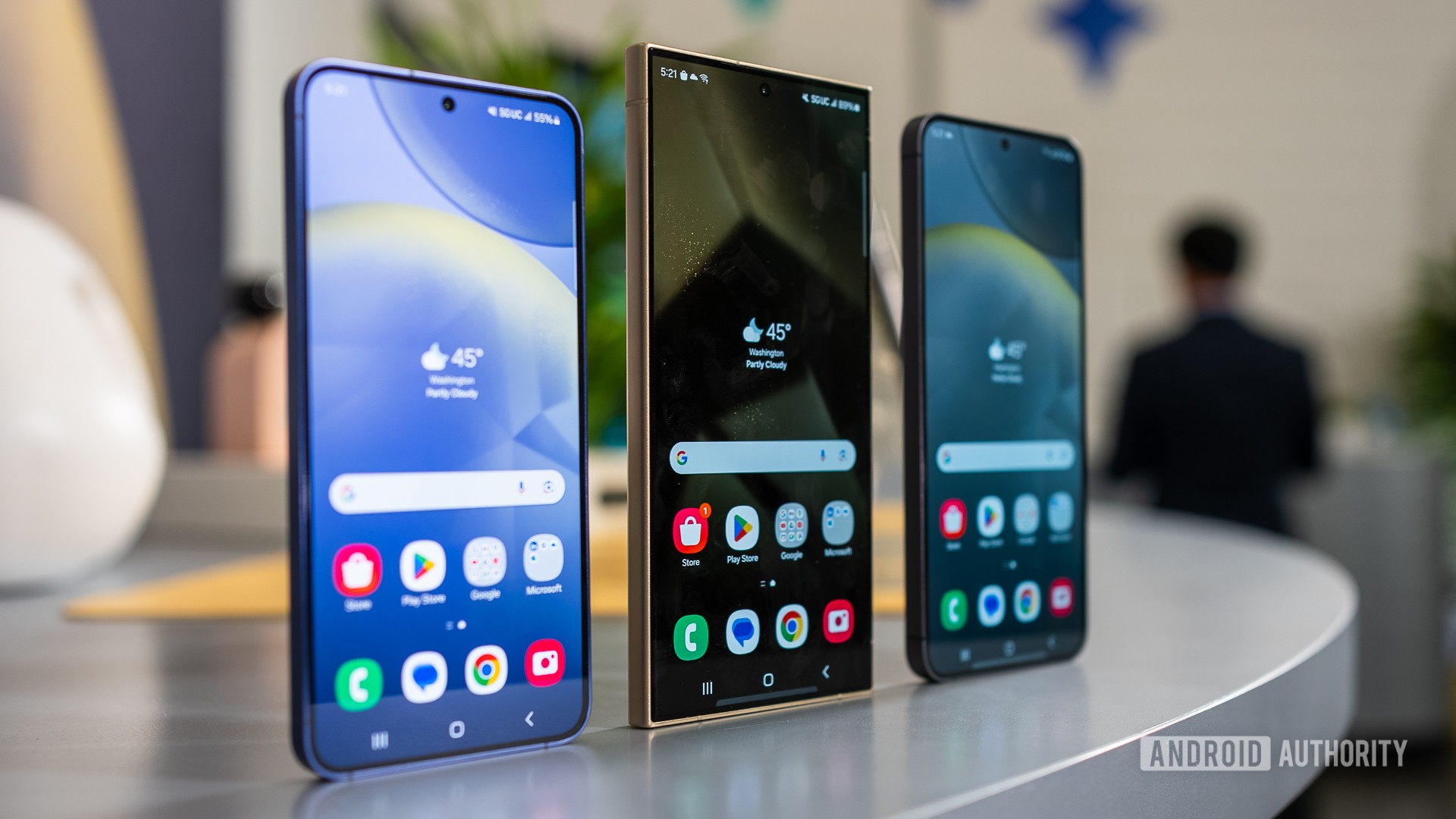Affiliate links on Android Authority may earn us a commission. Learn more.
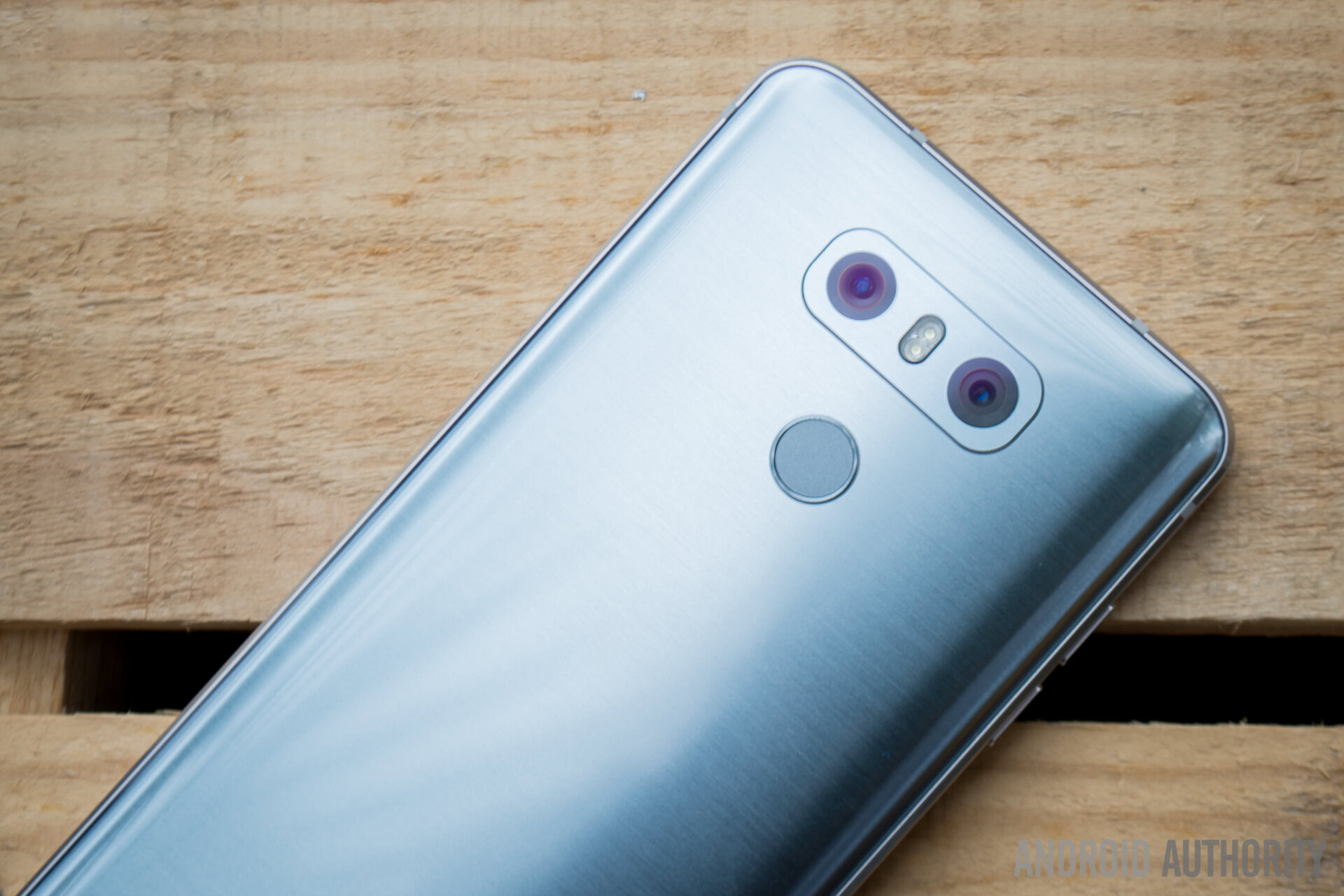
LG LG G6
What we like
What we don't like
Our scores
LG LG G6
[aa_cellphoneplans model=”4224″ carrier=”5385_115374″]
Last year saw LG bring us the LG G5, a handset that dared to be different and failed spectacularly in doing so. This resulted in losses for the company’s mobile division in 2015, and lost market share as Samsung extended its lead and Huawei caught up and overtook the Korean manufacturer.
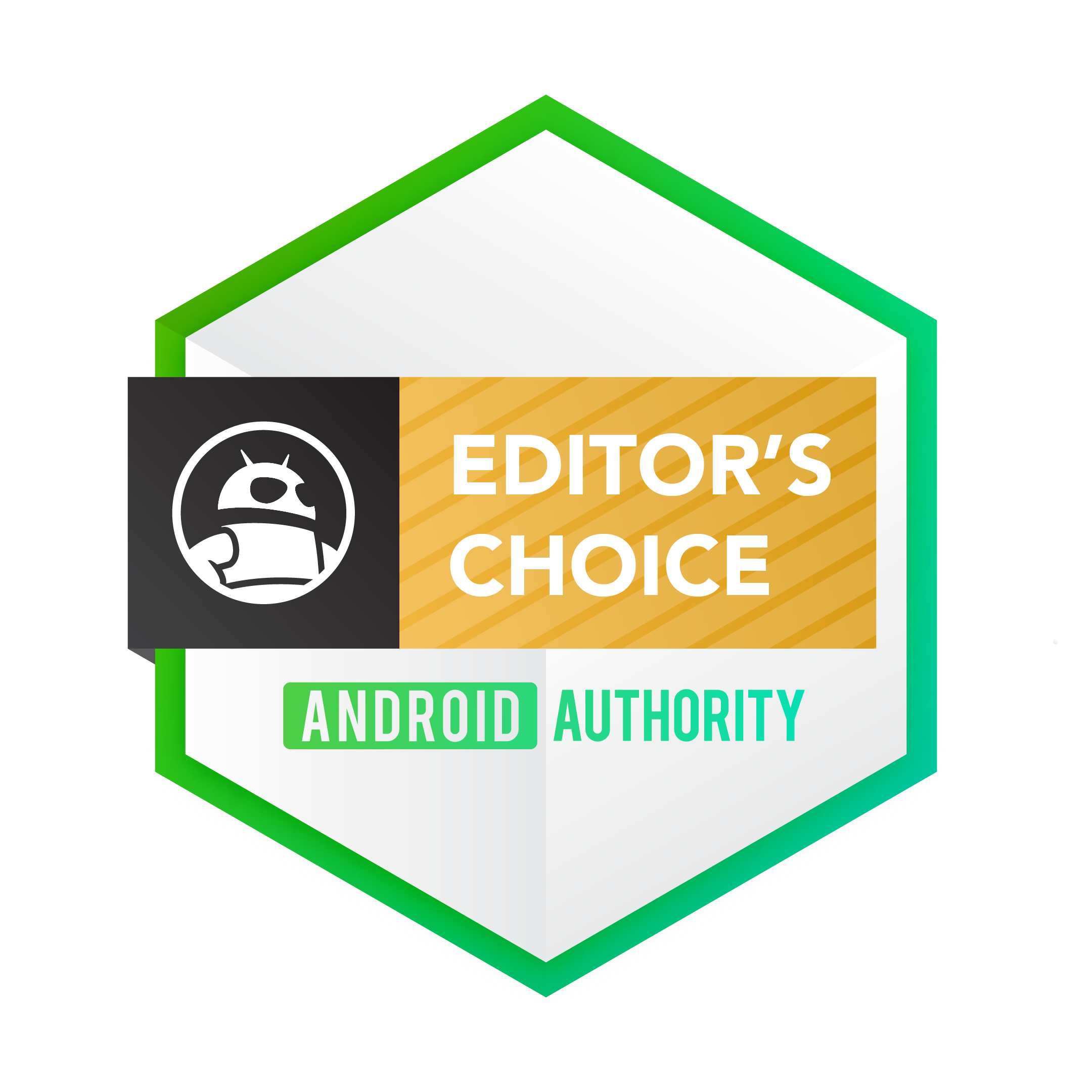
Yet, there is one way the LG G6 is different; its 5.7-inch screen with a unique 18:9 aspect ratio. With other phones expected to also offer the same aspect ratio display later this year, the G6 could prove to be a forward-thinking phone rather than yet another one-hit wonder from LG.
- LG G6 pricing and availability: what we know so far
- LG G6 officially announced: everything you need to know
Is a unique display and solid – if muted – package enough to make the LG G6 a must-buy? With a package that’s mostly identical to the LG V20, should you buy a G-series or a V-series? Does LG’s decision to ditch the gimmicks and focus on a solid experience pay off? Find out, in our full LG G6 review.
In an effort to bring our readers, and viewers, the most comprehensive review experience possible, the LG G6 was reviewed by two different members of Android Authority. While Lanh Nguyen put together the video linked above, I put together the in-depth written review encompassing both of our opinions to provide the definitive Android Authority view on LG's latest flagship.
We have both been using a US version of the LG G6 (with wireless charging built in) running the latest pre-final software with OS version 7.0, build number ending D90U and software version ending 709I. Traditionally, we don't review non-final software but LG has confirmed to us that it is about 95% complete and is ready for review. We'll be updating this written review with any changes once we get the final retail software update closer to launch.
Design
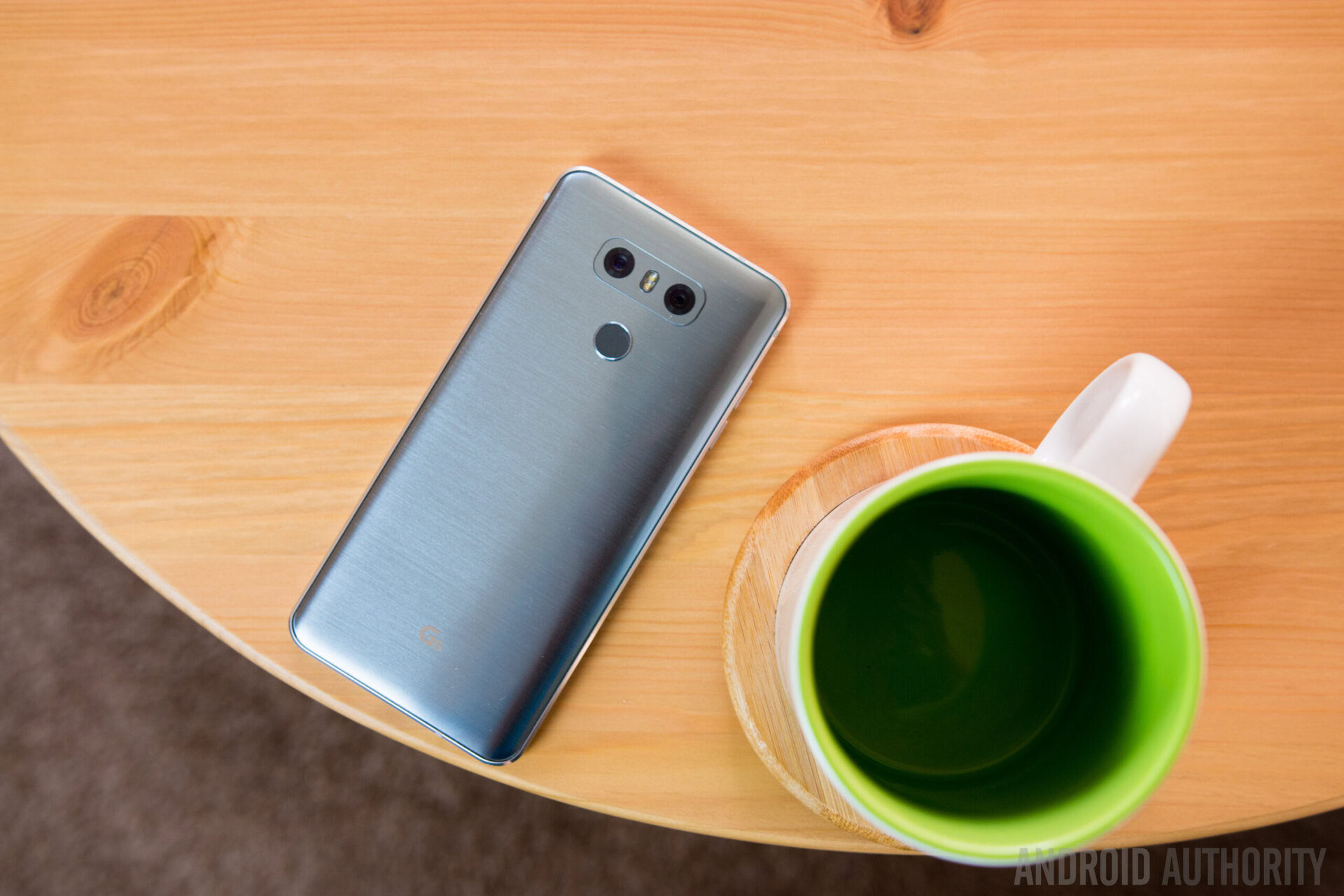
This year, LG has gone back to basics. There are no more tricks, no more experiments and most importantly, no more modularity.
The LG G6 design formula is rather simple and straightforward, with a sturdy metal frame paired with a couple different kinds of Gorilla Glass. The front features Gorilla Glass 3 protection (as does the camera lens cover on the rear), while the back cover is made from Gorilla Glass 5. The glass finishes are fingerprint and dust magnets, but this is something we’ve now come to expect from most glass phones out there. Fingerprints on the White model are very difficult to discern, while fingerprints on the Platinum color option are a tad more noticeable. On the Black version, fingerprints are most noticeable.
Unlike previous G-series flagships, the LG G6 features a unibody design, which unfortunately means the company had to forego the removable battery this time around. It’s a small tradeoff for what you get in return, though – an IP68 rating for dust and water resistance.
Personally, I’ll happily take the enhanced durability over a removable battery.
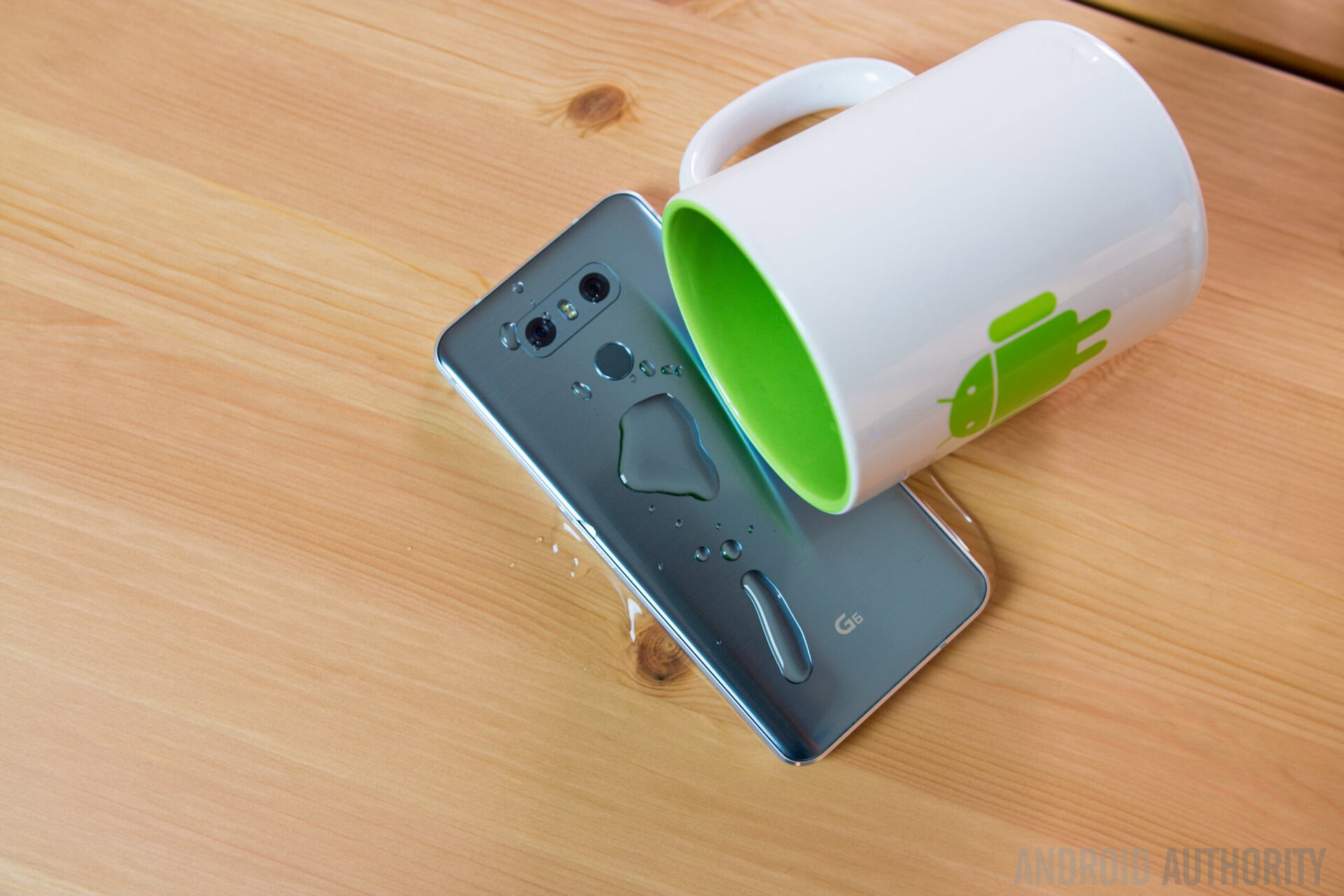
Although the design is new for LG, there are a few flourishes which are atypical of the Korean OEM, including the signature power button on the back that doubles as a fingerprint sensor. It works extremely well, is very fast and accurate to unlock and doesn’t require you to press the button to unlock your phone.
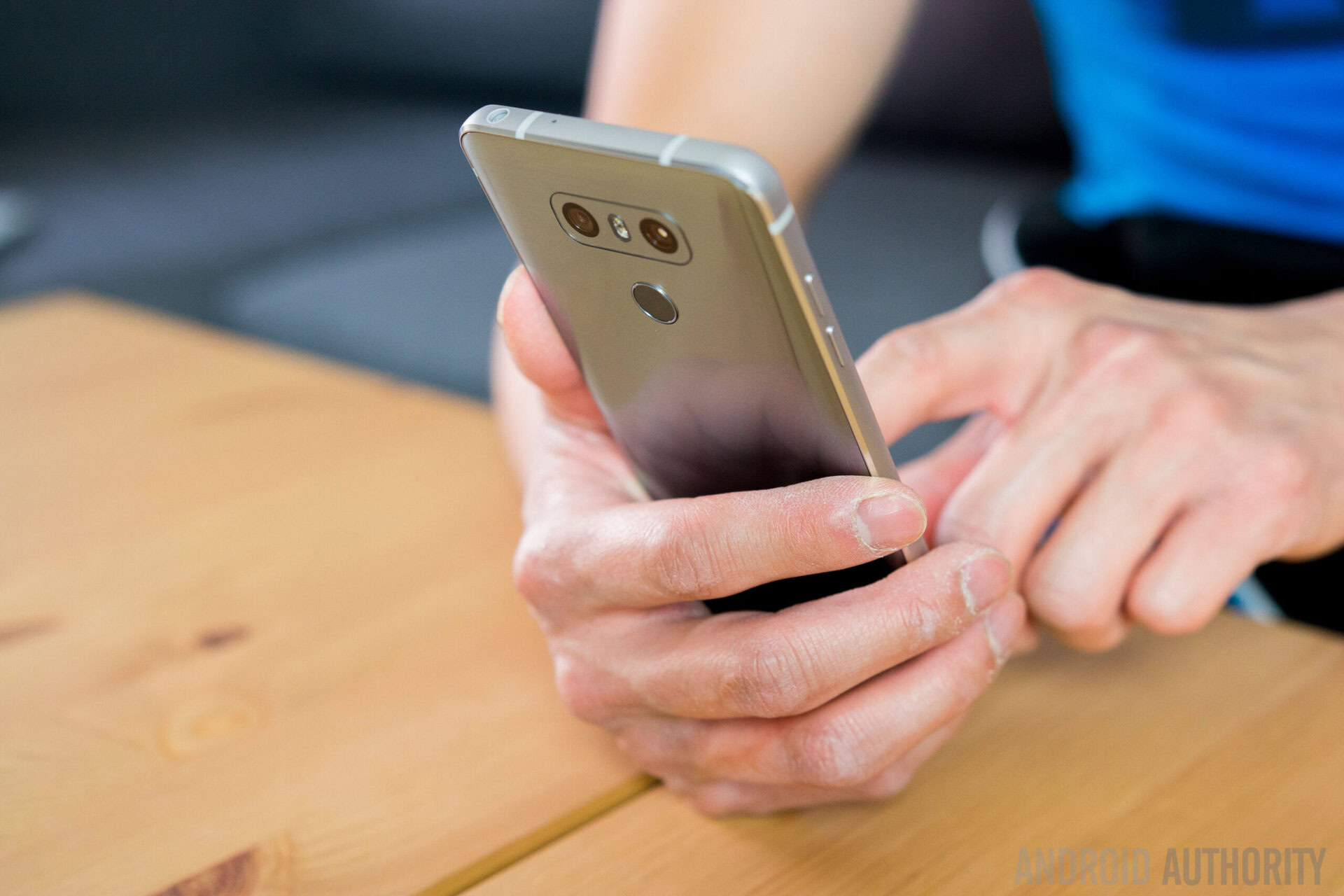
On the top of the device, you’ll find a standard 3.5mm headphone jack, which LG plans on keeping for the foreseeable future as the benefits outweigh removing it. The bottom of the device houses the USB Type-C port and a single speaker, and the right side features the SIM card slot. The volume keys can be found on the left of the device, and not on the back flanking the rear-mounted power button. LG toyed with placing the power button/volume keys on the back panel of its devices for a few years, but it looks like that experiment has come to a close.
LG G6 is different from previous LG flagships, and that's a good thing.
Overall, the LG G6 is different from previous LG flagships, and that’s a good thing. Rather than attempting to reinvent the wheel, LG has gone back to basics. Opting for a metal/glass construction is a safe choice that’s proven to work, and that’s why LG went with it. After last year, LG needed safe to appeal to the masses, and the G6 does just this.
Display
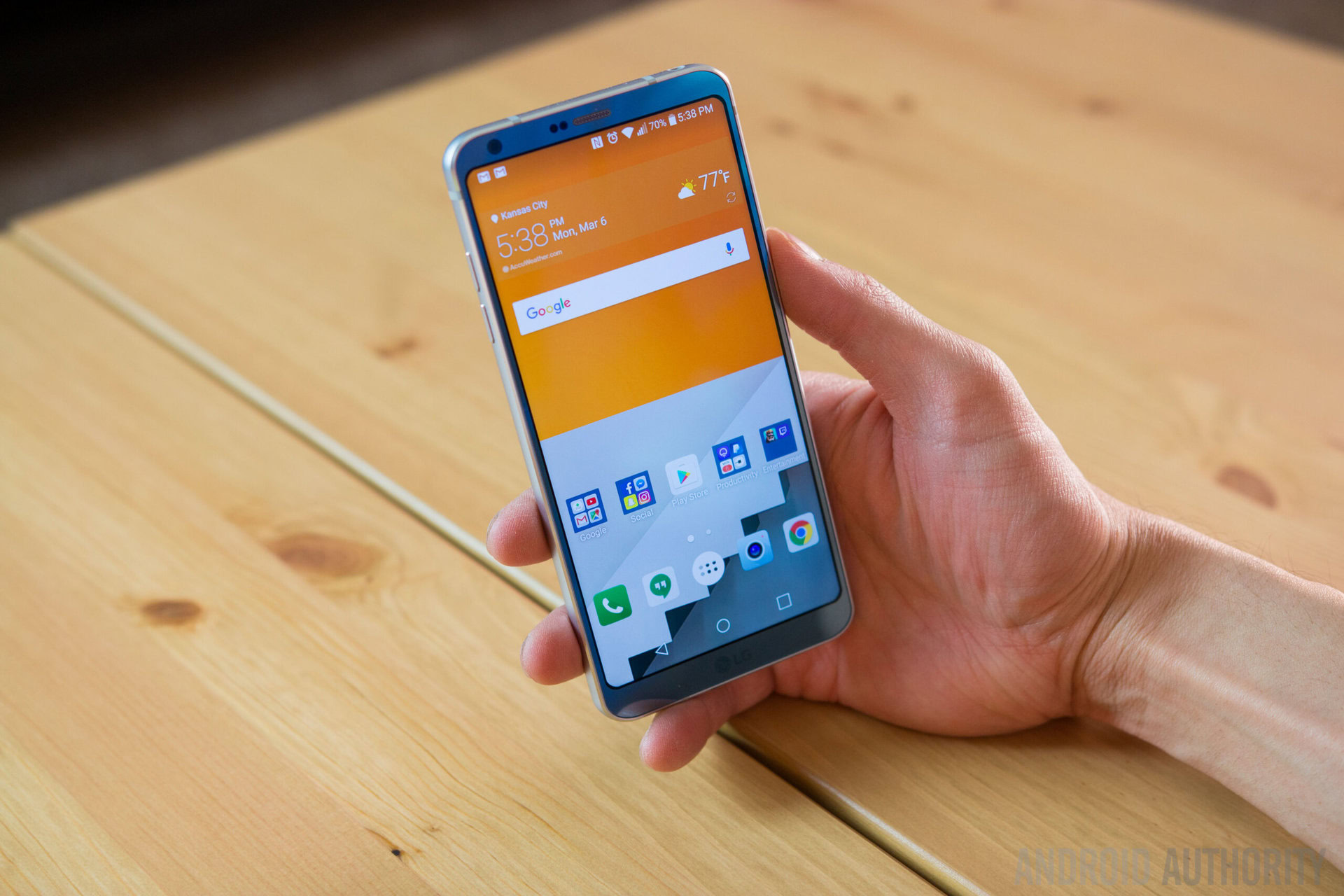
The standout feature on the LG G6 is the new 18:9 2:1-aspect ratio screen, which, coupled with some excellent design choices, means LG has managed to fit a 5.7-inch display in a body that’s not much larger than a regular 5.2-inch phone. Compared to the iPhone 7 Plus or Google Pixel XL, the LG G6 is significantly smaller. It’s truly a feat of engineering that is much easier to appreciate when you hold and use the phone.
The LG G6 offers a one-handed experience that’s arguably the best of any 5.7-inch phone
LG has made conscious design choices to enhance the one-handed use of the phone, specifically opting for very narrow bezels on the sides, top and bottom. You’ll also find rounded corners for both the display and the outer frame and the result is a one-handed experience that’s arguably the best of any 5.7-inch phone. LG says the decision to make the display and the frame rounded makes the screen more durable against corner impacts versus a traditional screen with regular corners. The rounded corners do provide a nice aesthetic touch, but as Lanh pointed out, they’re not perfectly rounded and you can still see a little sharpness on the corners. It doesn’t take away from the overall experience, but it’s hard to unsee after you notice it for the first time (sorry if we are the bearer of bad news).
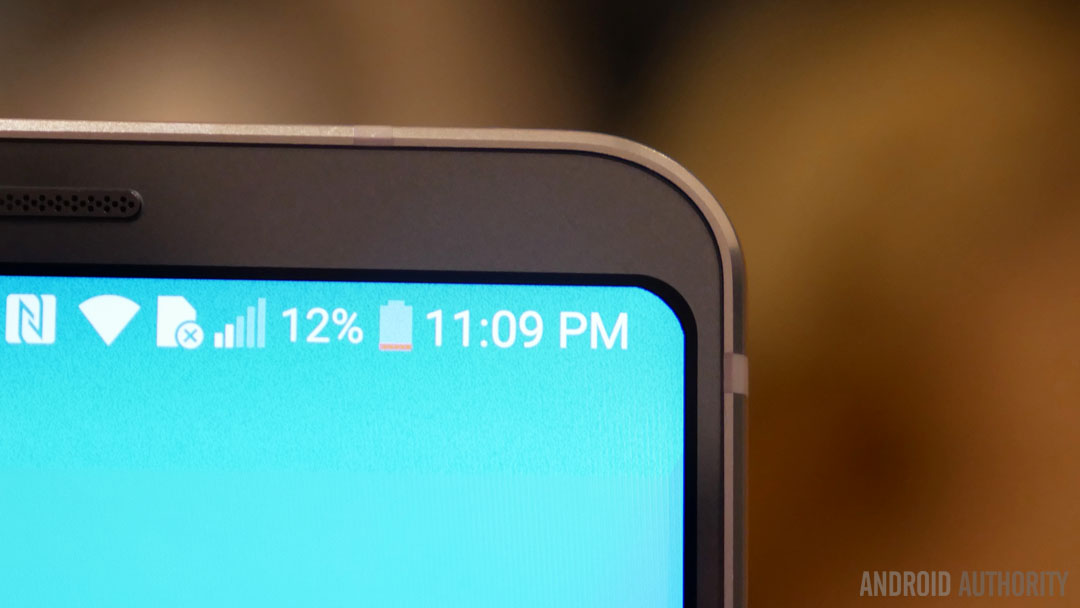
The display is an LCD instead of an OLED panel, but it’s a very good looking display to say the least, and by far the best screen we’ve ever seen on an LG phone. Lanh and I both agree that it has the perfect amount of color and contrast, so it doesn’t appear washed out or oversaturated. Rather curiously, the default out-of-the-box wallpaper, which was developed in partnership with Pantone, doesn’t do the display much justice, but switching it out to one of the others shows off the display in all its glory.
Since the G6’s Quad HD panel sports an unusual aspect ratio, that means LG packed in a few hundred more pixels than you’d see on a normal 5.7-inch display. If you split the screen in half, you essentially get two perfectly symmetrical squares stacked on top of each other. LG have made some tweaks to the software to take full advantage of this. In landscape mode, for instance, the display splits up into two squares side-by-side; this arrangement makes multitasking a bit easier as you’re able to see more of each app.
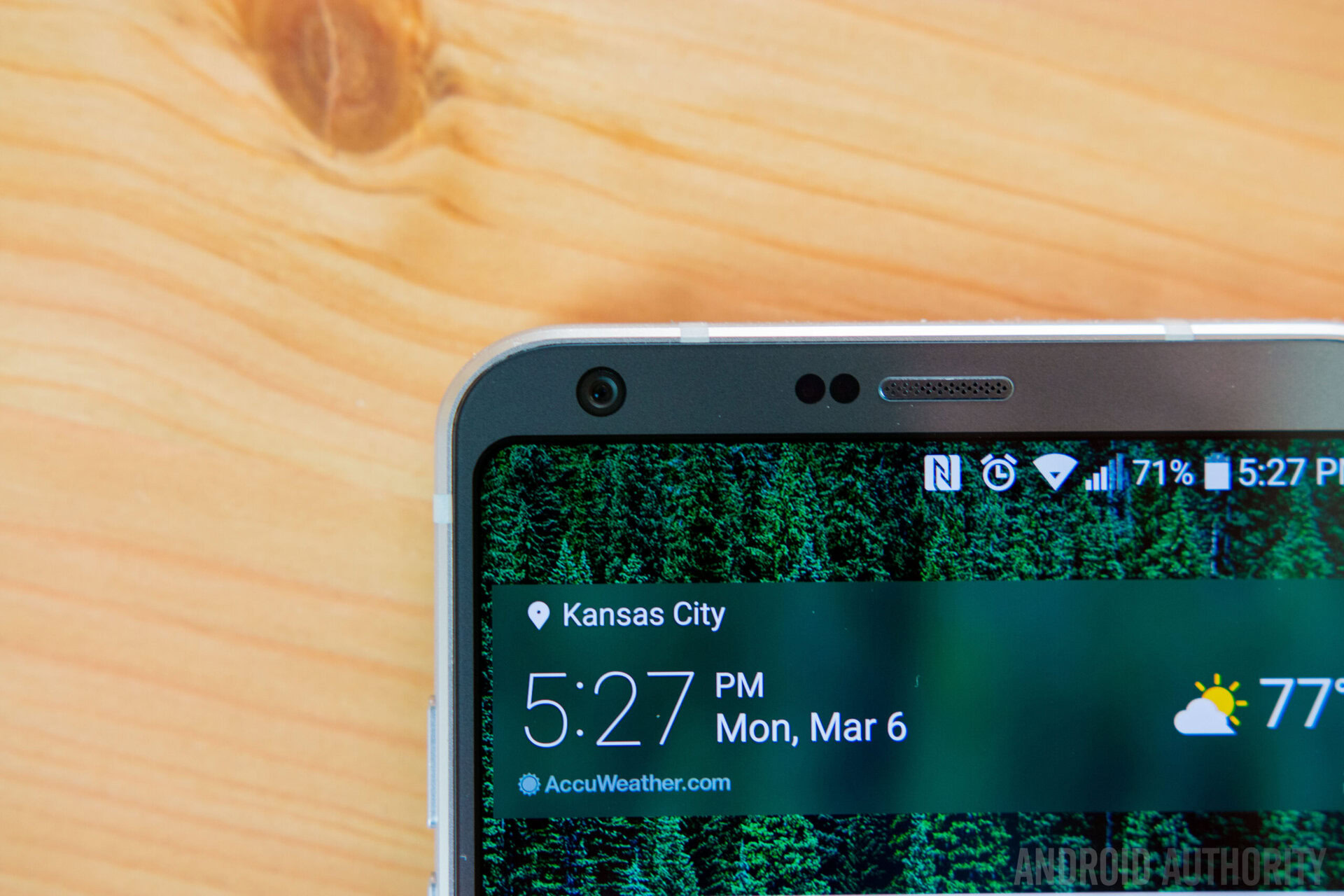
The LG G6 is also the first phone to support both HDR 10 and Dolby Vision, which promises to bring an enhanced viewing experience thanks to a much brighter and more vibrant image. Right now, there’s no content to support either of these standards, but Netflix is expected to update its mobile app to support HDR content in time for the launch of the LG G6, which is likely to be the first of many phones to support these standards.
Spending time with the LG G6’s display does raise a larger issue around the aspect ratio, especially if it’s to become the standard for phones going forward. When you’re consuming content that’s native to the 18:9 ratio, the experience is fantastic… but when you’re watching content that’s 16:9 by default (as almost all content is right now), or using an app that doesn’t scale to the new ratio, you have awkward black bars on either side.
LG has built in an app scaling feature that lets you force apps to rescale to 18:9, but you won’t use it as much as you might think as it can cause the content to be cut off, which LG does warn you about. Luckily, Netflix’s original series – such as House of Cards – have been shot in 2:1 natively. Plus, as more devices adopt the new standard, it’s likely other producers will follow suit.
Putting it through our testing, we found the display to have a max manual brightness of 556 nits, which is boosted to a very respectable 663 nits when auto brightness is engaged under direct light. In sunlight, this is likely to be even higher and we’ve had no issues with legibility in all conditions. Its color temperature of 8281 Kelvin is rather on the cool side resulting in a blue-ish tinge to the whites – which is common to all LCD panels – but this isn’t immediately noticeable and the display certainly looks fantastic.
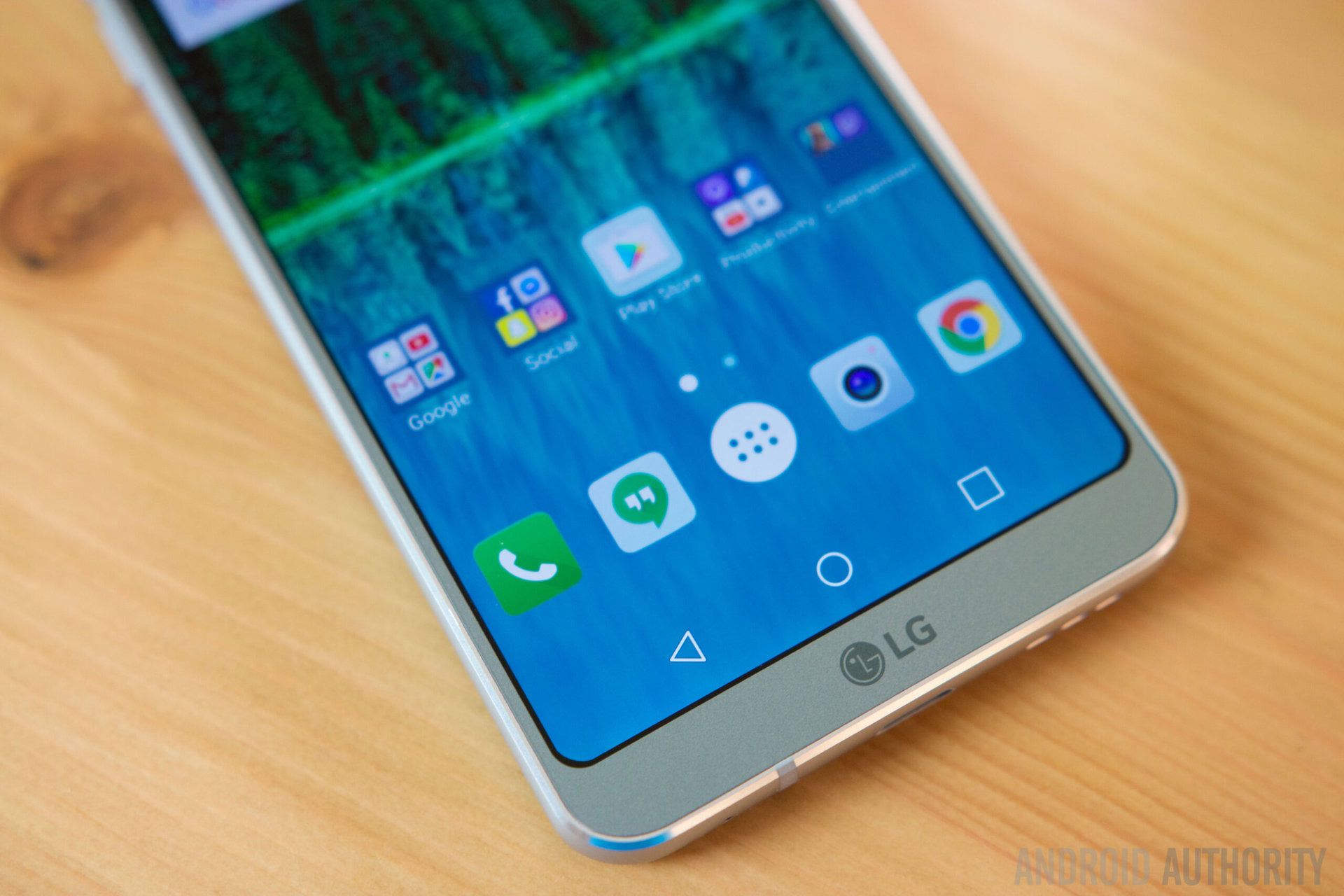
Without doubt, the LG G6’s display is fantastic and hopefully a sign of things to come for future smartphone displays. For years, manufacturers have been trying to make screens larger, but this results in larger phones. With the G6’s rounded corners, slim bezels and 18:9 aspect ratio, we finally have a handset that has a large screen without the big footprint we’ve been accustomed to.
Like most flagships, there’s also an always-on display which does the job and shows you notifications without first making you turn the screen on. The company has also included a new brighter screen option for the always-on display, but Lanh and I both agree – we’re not entirely sure what this feature accomplishes. It doesn’t appear to make the always-on display any brighter. Now, this could be due to the fact that both devices are not running final software, so we’ll be sure to update this review if we notice any changes.
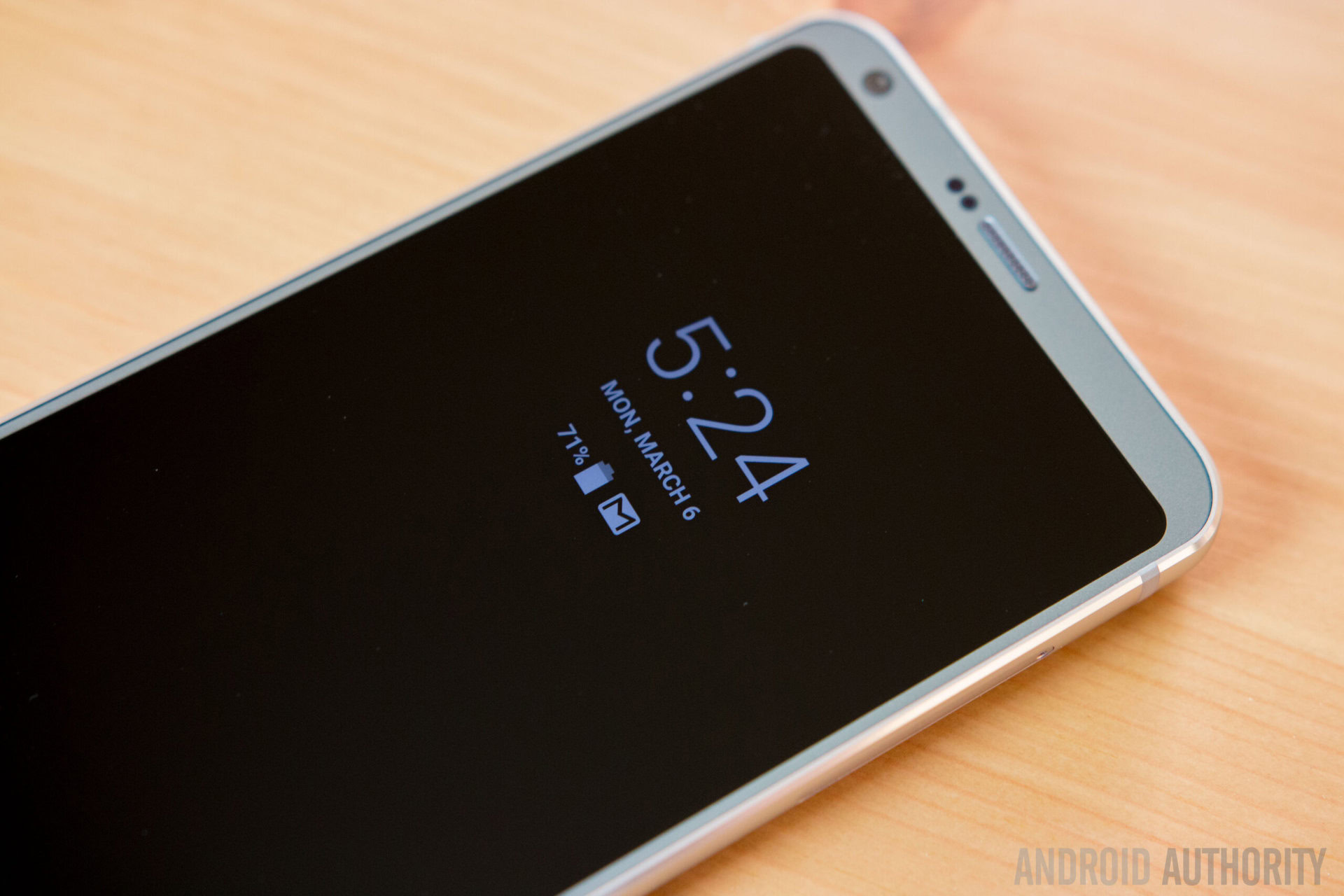
No, the G6 doesn’t have an OLED panel, but it’s still incredibly vibrant, colorful and a joy to use. Lanh and I both agree there’s a massive difference between the LG G5 and LG G6 displays and thankfully, there’s no light bleed either, which we’ve noticed on many other LCD panels.
Overall, there’s a lot to like about the LG G6 display. Thanks to HDR and Dolby Vision support, it’s at least future-proofed for a few years to come. It may not be the most accurate screen, nor an AMOLED panel, but LG has done more than enough to convince us that 18:9 is the future of smartphone screens and not just a gimmick.
Performance
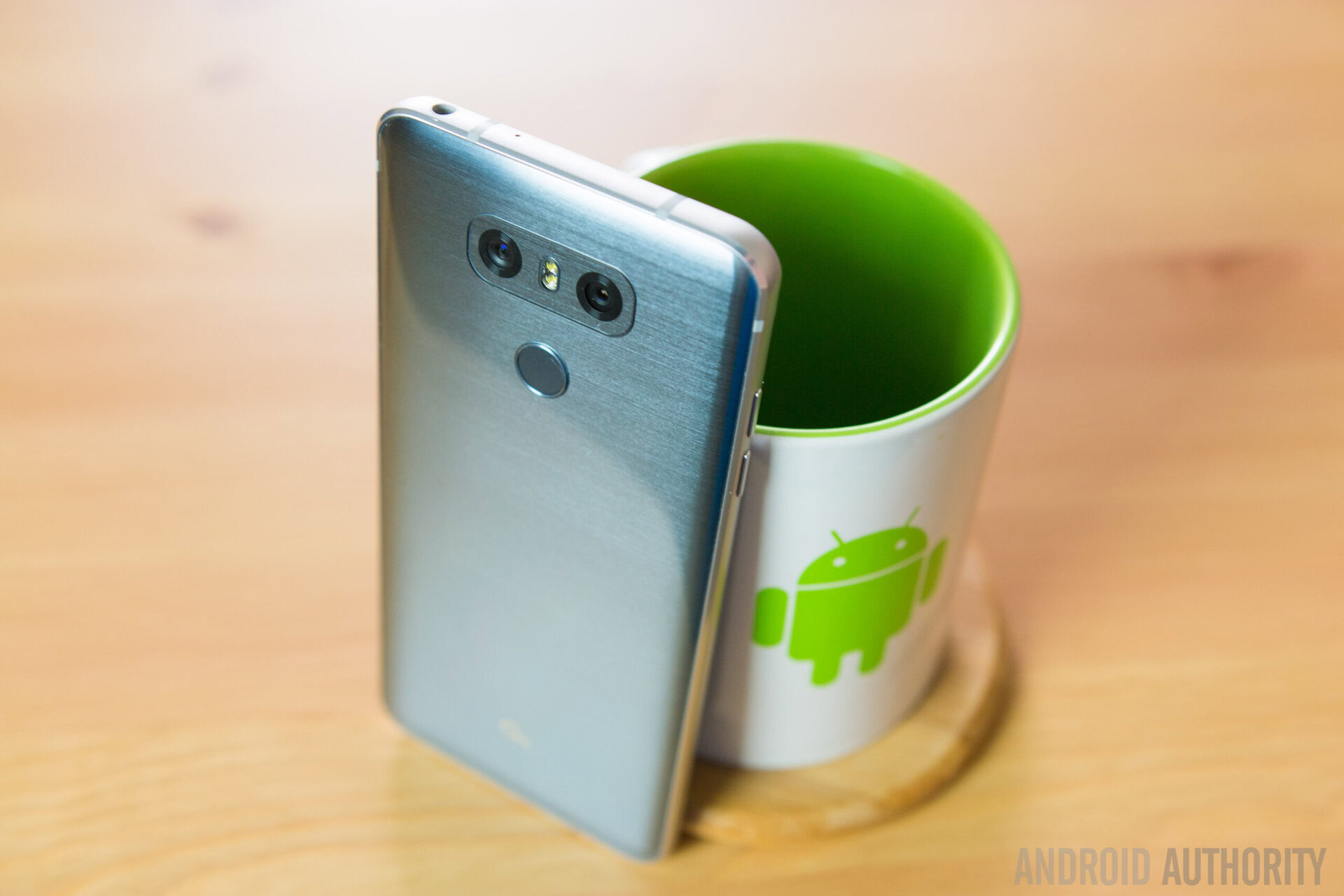
Ahead of the launch of the LG G6, we heard rumors that LG would opt for last year’s Snapdragon 821 processor rather than the new Snapdragon 835, mainly as the latter would require the launch to be delayed several months. As a result, the LG G6 comes equipped with the Snapdragon 821 processor alongside 4GB of LPDDR4 RAM and an Adreno 530 GPU, which is the same package found in the OnePlus 3T and Google’s Pixel XL, the former being the handset we crowned the best smartphone of 2016!
Like Google’s flagship, the LG G6 is smooth and responsive, with almost no perceptible lag. As this is pre-final software, we’re putting the few minor glitches down to the software and we’d expect the final version to be faultless or close to it. We’ve both had a couple of small software bugs – myself with freezing and Lanh with connectivity – but these should be fixed in the final software – we’re merely mentioning them here for total transparency.
The Adreno 530 proves to be a very solid graphics chipset with the gaming experience on par with all major flagships to date. Running graphically intensive games, there are no noticeable dropped frames and the LG G6 is certainly capable of handling all the games you throw at it. With Vulkan support also built in, you’ll also be able to run most games that developers put out in the coming months and years.
It flies... like a G6
Some people may be disappointed that the LG G6 isn’t powered by the Snapdragon 835, but we’ve really had no issues with performance; the handset handles everything you can throw at it. While performance may be affected by carrier bloat, the unlocked version certainly delivers as far as performance goes. As Lanh put it: it flies… like a G6.
Hardware
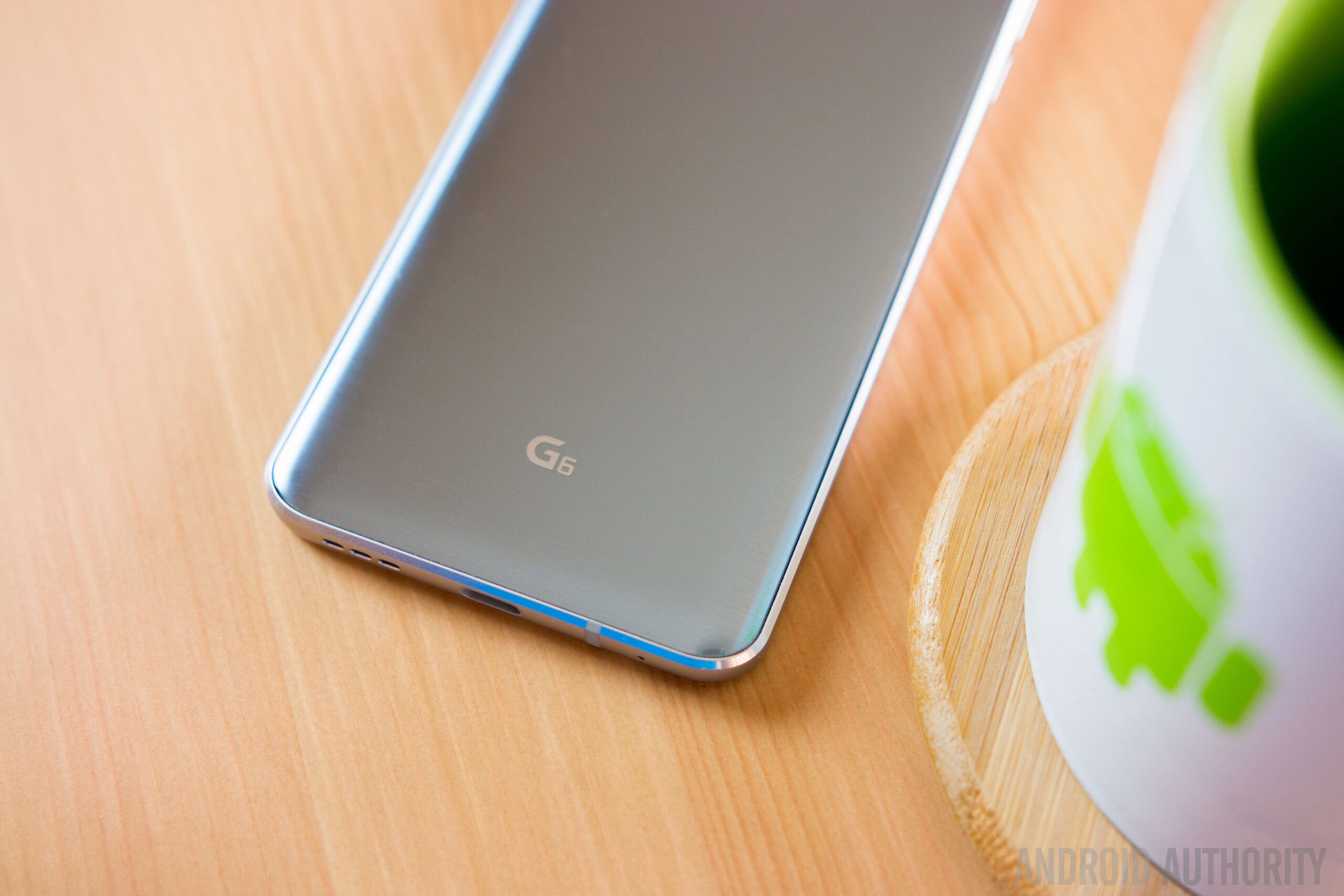
The LG G6 comes equipped with 32GB of storage in most markets, which is expandable by up to 2TB using a microSD card slot. Additional connectivity features include Bluetooth 4.2, GPS, NFC and in some markets, an FM radio. The USB Type-C port is v3.1 compliant and supports USB On-The-Go, meaning you can connect a hard drive or USB stick using a compatible adapter (which isn’t included in the box).
On the hardware front, there’s likely to be some contention as LG has opted for different SKUs in different markets, each with different feature sets. The global version has the features listed above but in certain Asian markets, the base model has 64GB storage while other Asian models have the Quad DAC found in the LG V20.
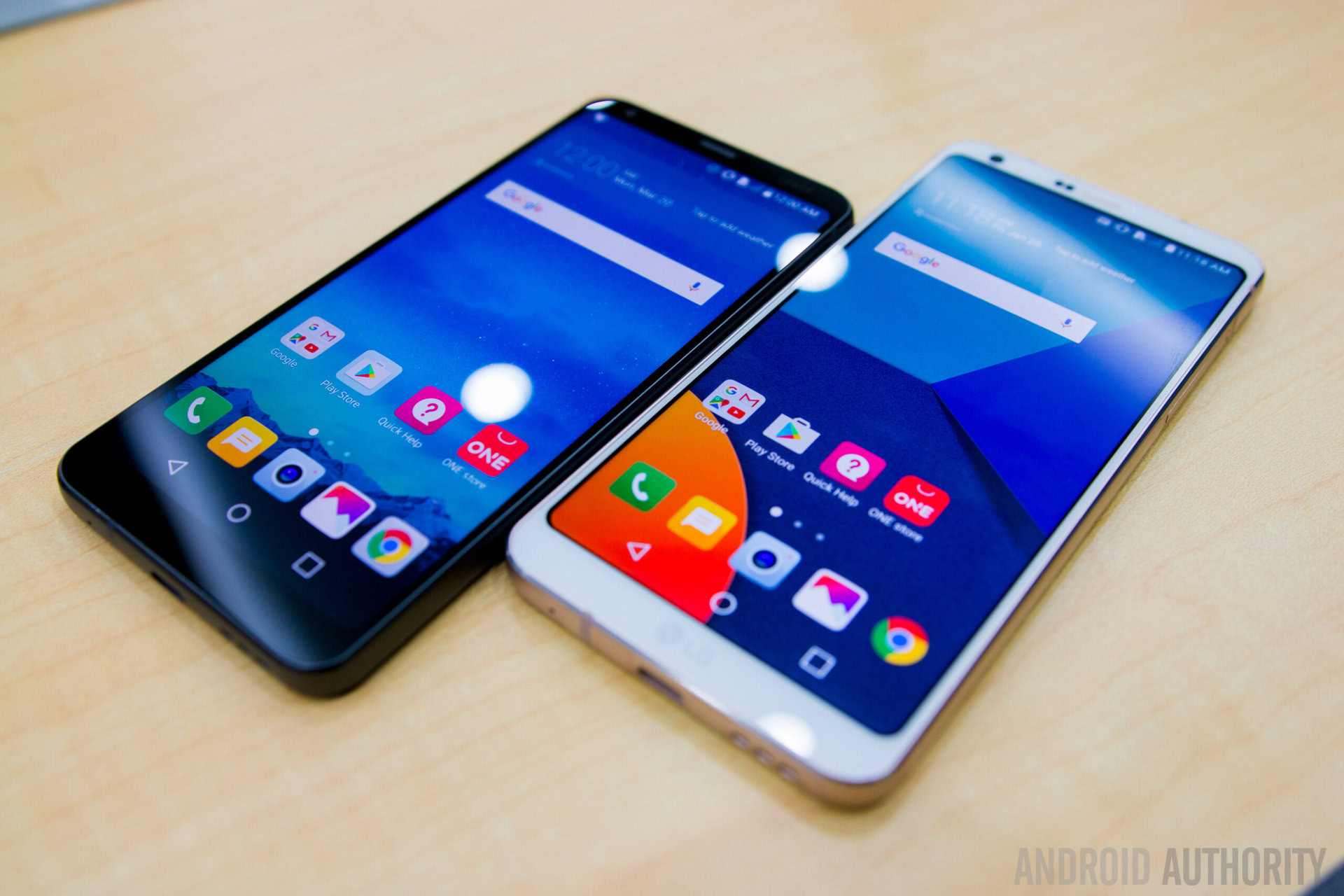
For users in the US, there’s no Quad DAC or model with more than 32GB of storage, but there is wireless charging; the G6 supports both WPC and PMA wireless charging standards. Finally, there’s also a dual SIM model for select markets, again with varying configurations depending on the market. It’s not the first time LG has done this – the LG G5 was also segregated with the B&O Play module not coming to the US at all – and LG tells us it is down to local markets to decide exactly which features the handset gets. For users in Europe and most countries, you’ll get the global model without the additional bells and whistles.
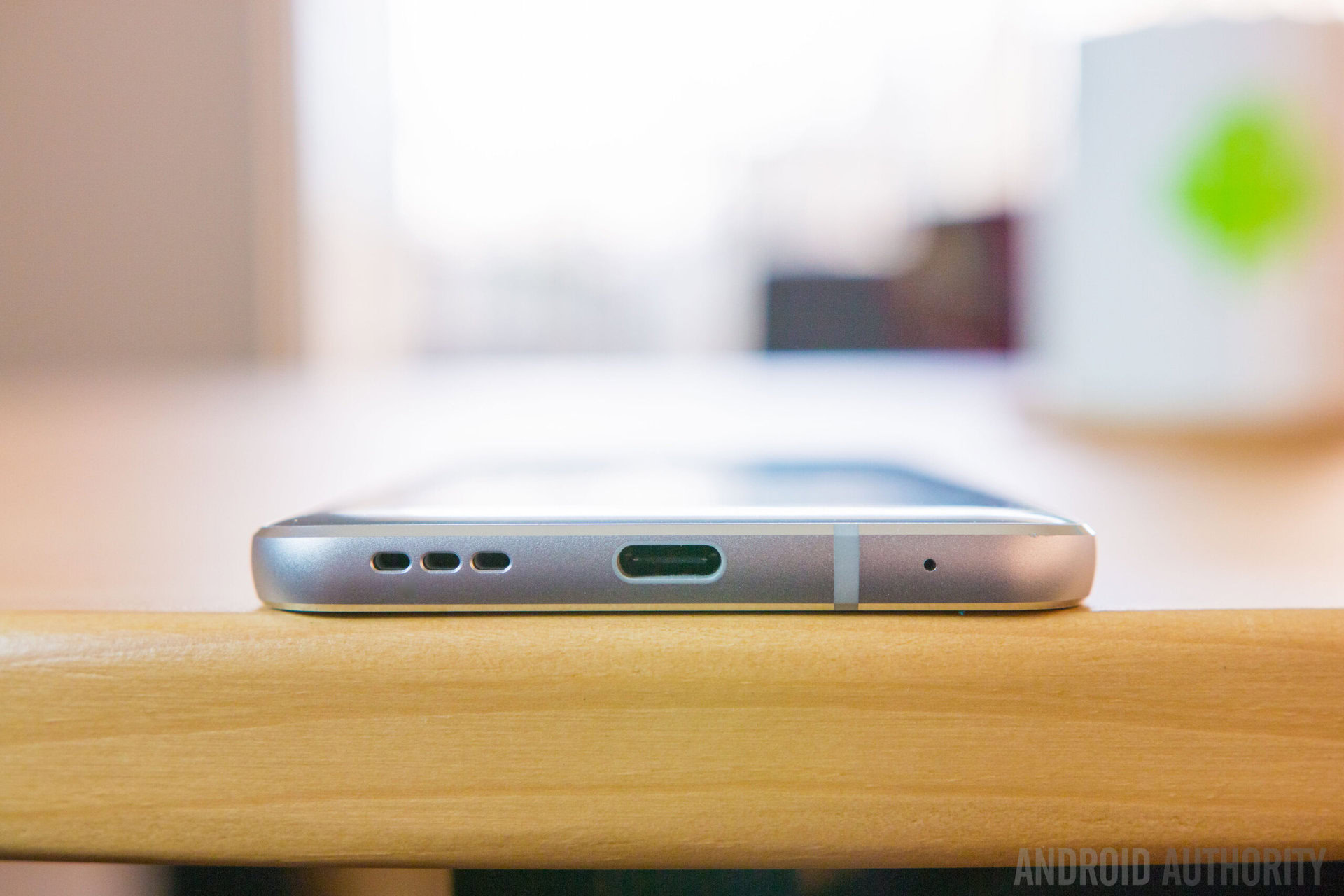
Next to the USB Type-C port on the bottom, you’ll find the single speaker. It seems loud for a single speaker, but like all bottom-mounted speakers, you can block it when using it in one-hand in landscape mode. Putting the audio setup through our testing, we find the speaker has loudness of 63.2dB, which is lower than most flagships and significantly lower than the LG G5 which scored 72.8dB.
The headphone jack outputs at 0.396 volts, which is low compared to many phones but better than the LG G5 (0.313 volts), while the noise level of -95.5dBA is on par with most flagships as well. Overall, the audio experience may not seem the best on paper, but it doesn’t disappoint in actual usage. While we would have liked dual stereo-speakers, it is certainly more than acceptable as it is.
Battery life
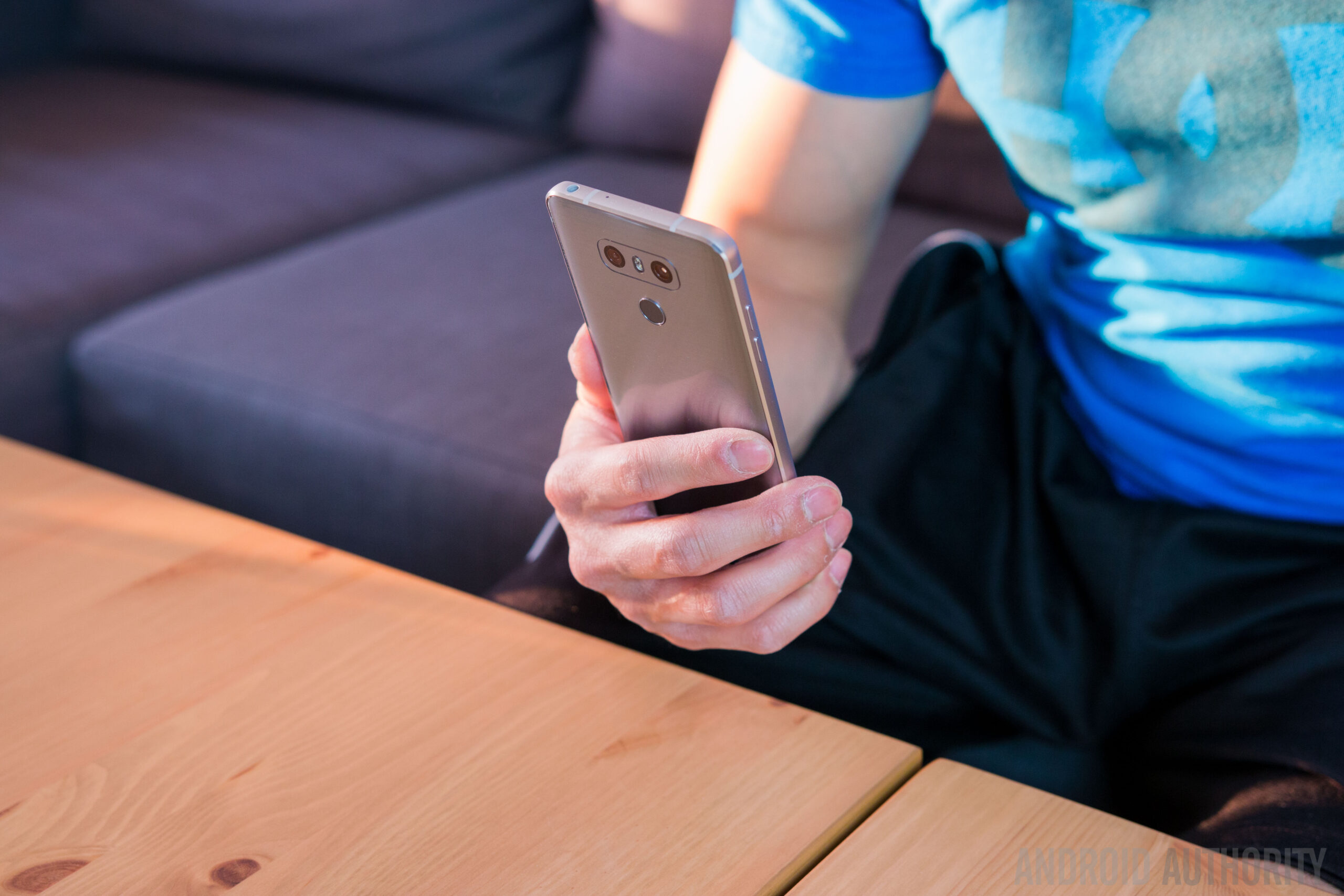
The switch to a metal/glass unibody design means the LG G6 has a non-removable 3,300mAh battery, which isn’t the largest we’ve seen on a smartphone but certainly delivers respectable battery life. During our time with the LG G6, we’ve both found that the handset is more than capable of surviving a full day of use on a consistent basis.
During Lanh’s testing, he found that even with a heavy usage day – such as using the camera lot with a few hours of gaming – the phone still has 20 to 25 percent battery life left at the end of the day. Personally, I’ve been very impressed by the battery life. On more than one occasion, the G6 has lasted me a full day and almost all of the second. Even on days with heavy usage, I’ve not had to top the battery up at all.
With the G6, we were able to consistently achieve at least a full day of use on a single charge
One of the perceived benefits of the Snapdragon 835 processor is an apparent boost in battery life of up to 20 percent, but this has yet to be proven. LG’s decision to go with the tried-and-tested Snapdragon 821 certainly seems to have paid off with the battery proving to be reliable and capable of lasting even the heaviest of usage.
For those wondering, we’re both capable of achieving 5 hours’ worth of screen on time off a single charge and that’s without really trying to hit those numbers. With some tweaks to usage, it would certainly be feasible to expect six or even seven hours of screen of time.
How does the G6 stack up to our Android Authority battery tests? How does it compare to the competition? In our quick battery test, which tests Wi-Fi browsing, video playback and gaming for 90 minutes and extrapolates the results to simulate a full day’s usage, the LG G6 scored a very respectable 7 hours and 51 minutes. By way of comparison, the Google Pixel XL scores 5 hours and 52 minutes, the LG G5 scored 6 hours and 31 minutes and the Galaxy S7 Edge scores 4 hours and 16 minutes.
Our next test looks at Wi-Fi browsing with each phone charged to full, the display set to 200 nits brightness and the handset placed a meter from the router with no app data syncing. A custom web script is then run inside our testing app and drains the handset right down to empty. In this test, the LG G6 lasted for 8 hours and 31 minutes, while the Pixel XL scored 10 hours and 38 minutes, the G5 lasted for 7 hours and 51 minutes and the Galaxy S7 Edge scored 8 hours and 11 minutes.
Another popular use case is video or media playback and for this test, the same testing conditions applied as above with a custom video file set to play on loop inside our testing app. For video playback, the LG G6 scores 8 hours and 56 minutes while the Pixel XL lasts for 7 hours and 1 minute, the LG G5 for 9 hours and 26 minutes and the Galaxy S7 Edge for 8 hours and 14 minutes.
Our final test is arguably the most taxing as it engages the entire processing package. Gaming is traditionally a sure-fire way to drain your battery rather quickly so in this test, we set a game to repeat its demo mode with the rest of the testing conditions the same. For pure gaming, the LG G6 lasts a very respectable 5 hours and 21 minutes, while the Pixel XL comes in at 4 hours and 43 minutes, the LG G5 at 3 hours and 58 minutes and the Galaxy S7 Edge at 3 hours and 46 minutes.
For the times when you do need to top it up or when you need a quick boost, the LG G6 supports Qualcomm Quick Charge 3.0 and the included charger can charge the handset from empty to full in 104 minutes. This is on par with most handsets that support Quick charging, but does pale in comparison to HUAWEI’s Supercharge and OnePlus’ Dash Charge, which are both significantly faster.
The LG G6 delivers flagship-worthy battery life
Overall, battery enthusiasts might be disappointed at the lack of a removable battery in the LG G6 but the hefty boost in capacity, coupled with software enhancements and a reliable processing package certainly delivers flagship-worthy battery life. Whatever your usage, the LG G6 should see you through at least a full day’s use.
Camera
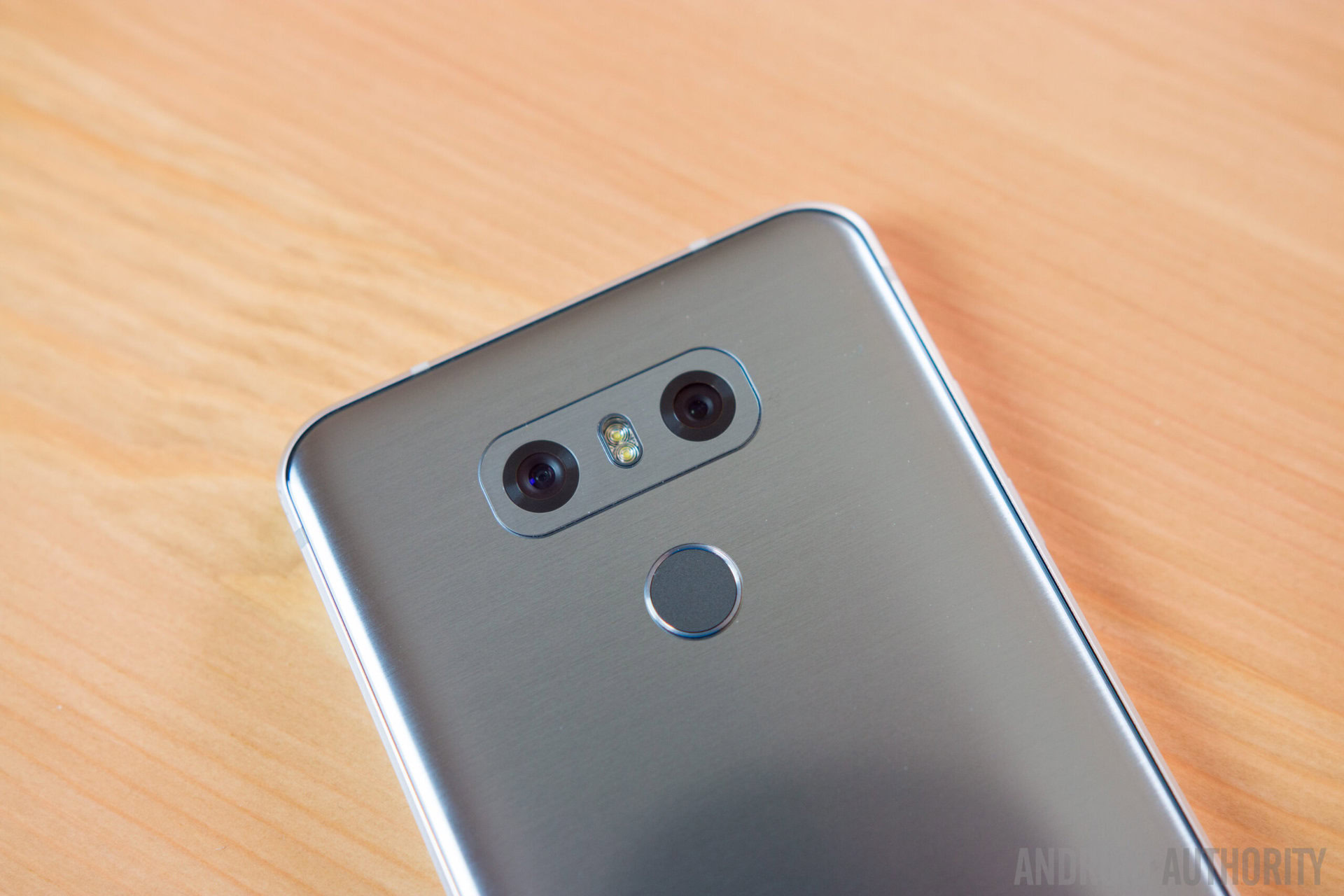
The LG G6 camera has also had a little upgrade this year but it’s not quite what you may have expected; rather than the customary boost in megapixels or pixel size, LG has opted to reduce the regular camera from 16MP to 13MP and boost the wide-angle camera to the same 13MP resolution. Doing so has meant they can also remove the camera bump, resulting in a camera that’s flush with the rest of the body.
Parity between the two cameras is arguably my favorite thing about the LG G6 camera; the LG G5 and the V20 both have a large disparity between the two sensors, with the regular sensor capturing 16MP images while the wide-angle shoots at 8MP. As a result, there’s a noticeable difference in the quality of images captured by both sensors and as LG correctly identified, it made the wide-angle camera the “secondary” camera. As they told us, providing parity between the two cameras means both cameras are now main cameras, and from our time with the LG G6, it certainly delivers on this claim.
They might share the same resolution count but the two cameras are behind two very different lenses; the standard angle is an f/1.8 aperture lens with optical image stabilization and 71-degree field of view while the wide-angle is an f/2.4 lens with 125-degree field of view, which is lacking in both OIS and autofocus. That’s not the only change from last year, with LG also opting to drop the color spectrum sensor as well as swapping out laser autofocus for phase detection autofocus, which works just as well, if not better.
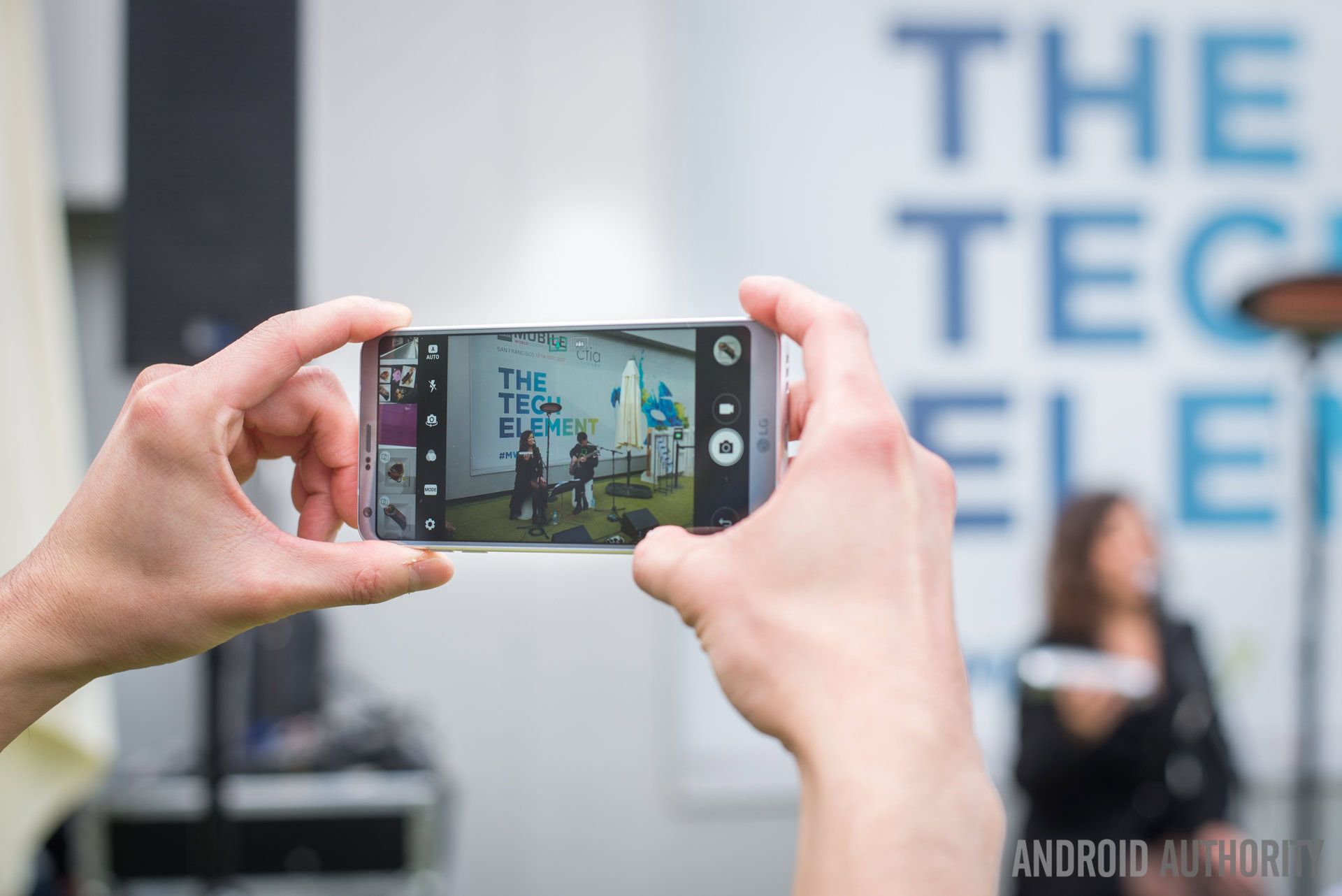
The camera carousel is one of the best uses of the wider screen and shows just how useful 18:9 can be.
The camera app is mostly the same as previous years but thanks to the 18:9 screen, you have the addition of one of my favorite LG G6 features – the camera carousel. Essentially, this provides a preview on the side of the regular viewfinder that lets you see literally every photo you’ve taken, versus just the one you’d normally see hidden in the corner on other smartphones. The camera carousel is one of the best uses of the wider screen and shows just how useful 18:9 can be.
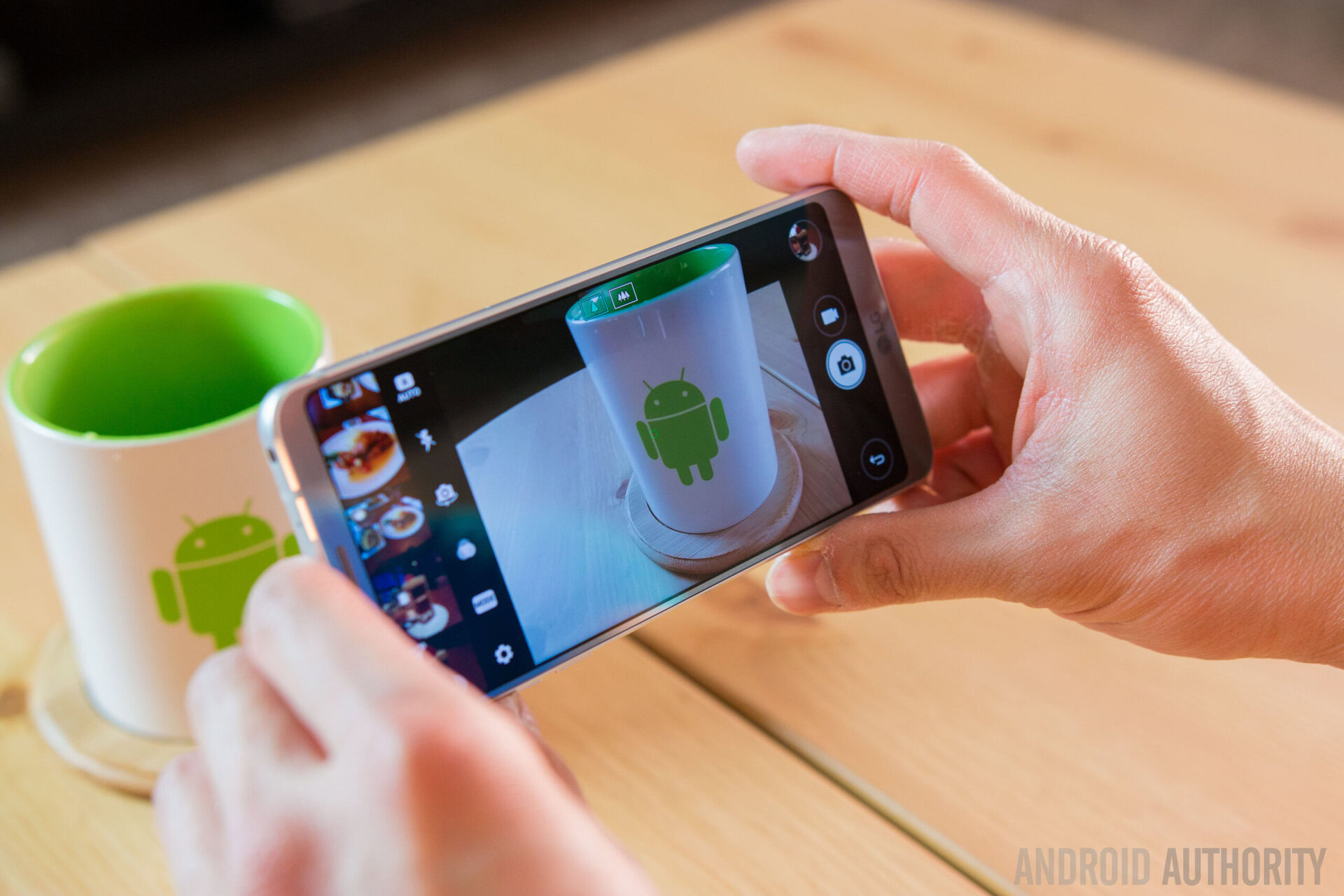
Elsewhere around the camera interface, you get the standard button controls at the top to switch between the two lenses that we’ve come to expect from LG’s dual cameras. With parity between the two cameras, you can also zoom and change lenses by pinching the display. But, given the fact that you must pinch until that point, you’ll likely find yourself swapping lenses by tapping the button as it’s the fastest and simplest way. The transition between the two lenses is much better than previous years and the middle ground between the two lenses is usable, but you’ll likely find yourself opting to use one of the two lenses rather than the middle ground.
The camera tweaks don’t stop there as LG has also added a new square camera that’s perfect for Instagram and comes with a few different modes built into it. One allows you to snap a photo and immediately see a preview of it on the bottom half of the screen while another lets you take multiple photos or short clips that the camera will stitch together automatically. For those who like putting four photos together in a collage, you can take four different photos in the grid shot mode and the camera will do all the heavy lifting.
Both Lanh and I agree that our favourite is the guide shot mode, which allows you to use a premade template or a previous photo as a guide for taking another photo with the same framing or composition. Once you dig into guide shot however, you see that you can also take multiple shots and turn them into a GIF at the press of a button; it’s a hidden feature that only shows up once you take multiple shots in guide shot mode, but it’s by far my favorite feature of the square camera.
For vloggers, video lovers or those who want a little more control over their video, the LG G6’s video recording capabilities definitely deliver
New to the LG G-series is full manual video controls which, until now, had been exclusive to LG’s flagship V-series. Now it looks like LG has finally given users exactly what they wanted. Compared to manual video controls on other smartphones, the LG G6 is miles ahead, with features like focus peaking, hi-fi audio recording and a wind noise filter all making it on-board. For vloggers, video lovers or those who want a little more control over their video, the LG G6’s video recording capabilities definitely deliver.
Without doubt, the LG G6 camera is a lot of fun to use, especially thanks to the wide-angle lens which can really take some breathtaking shots. It’s amazing how much you can fit into the frame over the standard telephoto lens. The quality of the photos themselves are impressive, with excellent detail, vibrant colors, great contrast and overall good dynamic range. There’s a noticeable lack of issues with overexposure of highlights and crushing of shadows that were prevalent in previous LG cameras, so it’s clear the Korean OEM has certainly made a lot of progress with its algorithms and processing.
As fun as the wide-angle lens is, it’s not great in low light which is to be expected from the narrower aperture and lack of OIS compared to the main sensor. In low light conditions, we recommend using the regular angle which can take some equally fantastic shots and produces a much sharper, more colourful and much cleaner image over the wide-angle lens. I personally feel that there’s still a lot to be desired from the low-light performance on the G6, but given this is pre-final software, I’m basing my concerns on that, especially as Lanh’s handset performs much better in low-light conditions.
On the front, you’ve got a 5MP camera which has a wide 100-degree field of view and you can swap between narrow and wide angles, which makes it perfect for group shots. In daylight, this is more than capable, although highlights are often blown out and shots tend to fall apart and are mostly unusable in less-than-ideal lighting conditions. This isn’t overly surprising given it’s the front -facing camera, but something to keep in mind nonetheless.
Related: The best Android smartphone cameras
LG G6 camera samples
Overall, the LG G6 camera is a joy to use, and, given the right conditions, it can take truly breathtaking photos. It’s not perfect – no smartphone is, after all – but it delivers quality in abundance. Whether it’s the square camera fun, the two angles or the manual video controls, there’s a lot to like about the LG G6 camera.
The LG G6 camera is a joy to use, and, given the right conditions, it can take truly breathtaking photos
Software
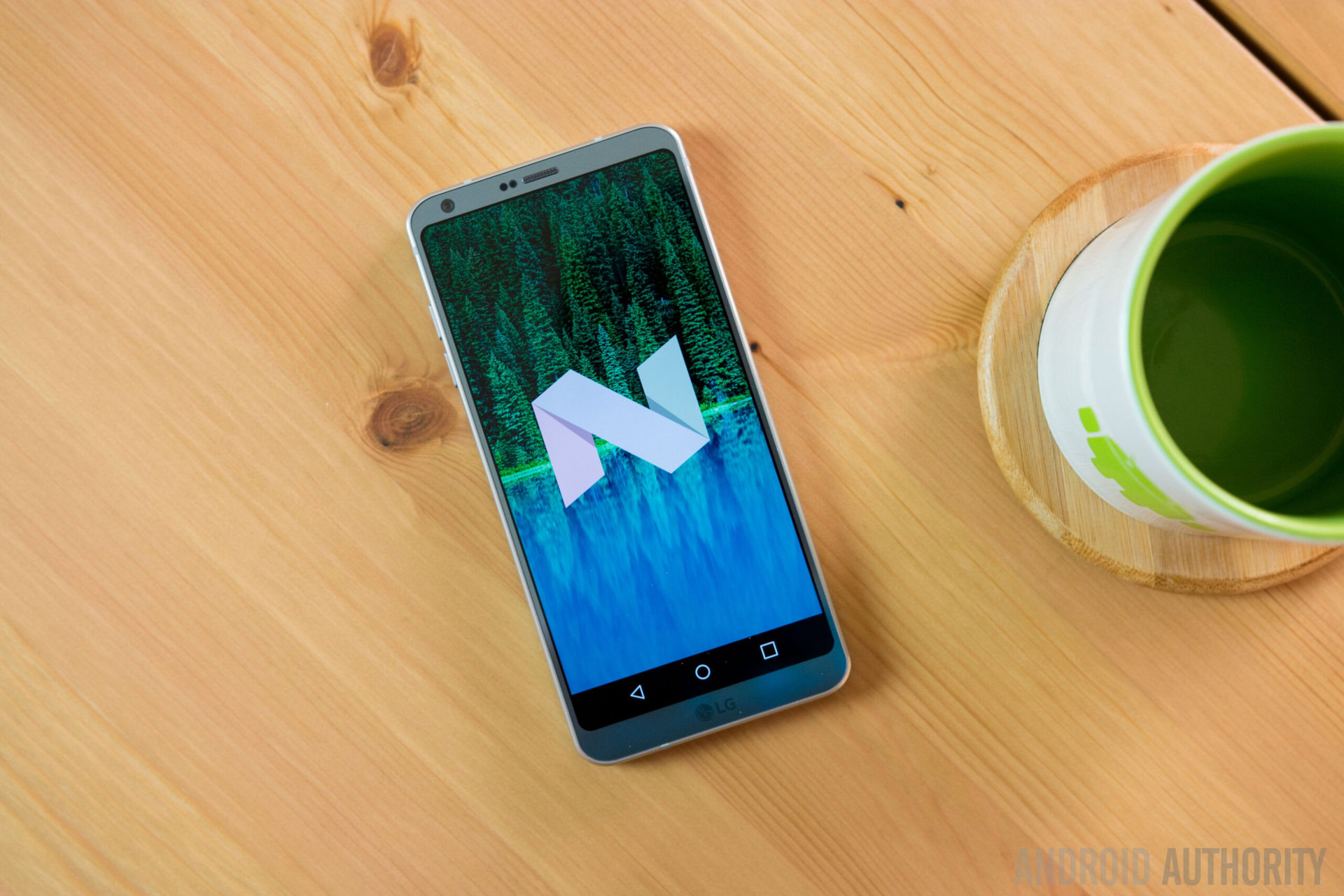
At the core of the LG G6, you have Android 7.0 Nougat with LG’s UX 6.0 on top. And like every year, a new flagship means a new iteration of the company’s UI. As a point of note, our pre-release units are running Android 7.0 but we’re led to believe that the LG G6 will ship with the latest Android 7.1.1 Nougat out of the box.
The new LG UX 6.0 essentially brings a new coat of paint with more natural colors, but still retains the features that we’ve come to expect from LG’s phones. The app icons have been updated to square icons with rounded corners for a much more uniform look – and the additional benefit of having square icons on a perfectly square half of the display – while pop-up menus within applications also have rounded corners.
The new icons are designed to complement the rounded corners of the display. While Lanh likes them for the uniformity they provide, I personally don’t like them and prefer the natural design of icons. Thankfully, LG provides an option in the home screen settings to display the icons without the backgrounds. This is also where you can enable the app drawer, although it is not enabled by default.
Press and hold the on-screen home key and you’ll no longer get Google Now as in previous years; instead, the LG G6 is the first non-Pixel Android phone to run Google’s Assistant out of the box and provides some very-welcome competition for Google’s flagship Pixel XL. Sure, Assistant is available on other devices running Nougat and Marshmallow, which takes the shine off it being available on the LG G6, but it’s a nice feature to have nonetheless.
The LG G6 is the first non-Pixel Android phone to run Google’s Assistant out of the box
LG has also worked with Pantone to create some interesting wallpapers and this is arguably a point of contention for me personally. Without doubt, the display is fantastic but as mentioned, the default “6” wallpaper doesn’t really show it off. However, there are loads of wallpapers available that truly show off the 18:9 form factor with excellent colors and fantastic composition. If you get the Black, Platinum or the White version, you’ll also find there’s a variant of the default theme to match those colors; on the Black version I’m using, this results in a truly fantastic black-on-black experience.
As part of its push towards the 18:9 screen, LG has also updated its app to show off what’s possible with the new aspect ratio. Apps like the calendar and weather both really show off the two squares stacked on top of each other and the calendar especially, is fantastic in landscape mode. The apps also conform more to Google’s Material Design guidelines than previous years and fit the overall Android experience very well.
With Nougat on board, the 18:9 form factor shows just how good it is for multitasking with the split-view in Nougat proving to be a lot more useful on an 18:9 aspect ratio than the traditional 16:9 ratio, mainly due to the extra amount you can see in each app.
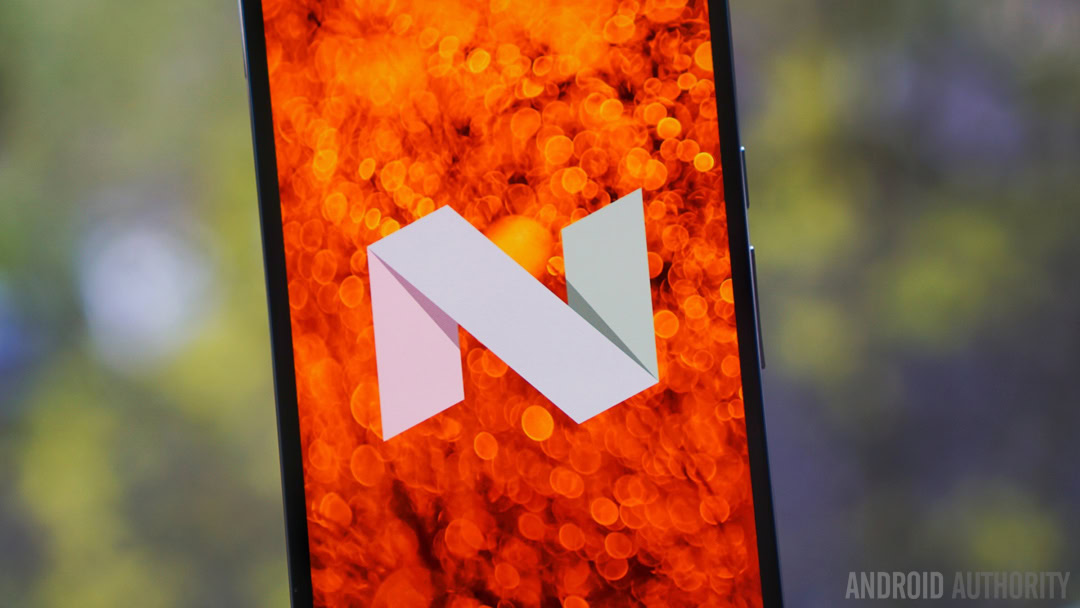
Overall, LG’s software has come a long way over the past few years, and the UX 6.0 running on the G6 continues this trend. LG has worked hard to optimize the software for the smoothest experience, there’s very little bloat on our unlocked units and LG’s own apps and wallpapers are fantastic at showing off the new 18:9-aspect ratio on the screen.
Download: LG G6 stock wallpapers
Specifications
| LG G6 specifications | |
|---|---|
Display | 5.7-inch 18:9 QHD+ FullVision IPS LCD display 2880 x 1440 resolution 564ppi |
Processor | Quad-core Qualcomm Snapdragon 821 |
GPU | Adreno 530 |
RAM | 4GB LPDDR4 |
Storage | 32/64GB |
MicroSD | Yes, up to 2TB |
Cameras | Rear: Dual 13MP wide-angle sensor (f/2.4 aperture / 125°) / 13MP standard sensor (f/1.8 aperture / 71°), OIS 2.0 Front: 5MP wide-angle sensor (f/2.2 aperture / 100°), 1.12µm pixel size |
Battery | 3,300mAh Non-removable Quick Charge 3.0 Qi and PMA wireless charging |
Water resistant | IP68 |
Connectivity | LTE-A 3 Band CA Wi-Fi 802.11 a, b, g, n, ac Bluetooth 4.2 BLE USB Type-C, NFC |
Software | Android 7.0 Nougat LG UX 6.0 |
Colors | Ice Platinum, Mystic White, ASTRO Black |
Dimensions and weight | 148.9 x 71.9 x 7.9mm 163g |
Gallery
Final thoughts

So, when can you actually buy this phone? We’re not quite sure yet. LG hasn’t revealed all the pricing and availability details as of yet, but we do know it’s coming to the U.S. sometime this Spring. March 10 is when the handset is coming to Korea, and the current U.S. availability rumors have been pointing to an April 7 release date. We’ll be sure to keep you updated as more information arises.
LG has certainly nailed it with the G6
After the failures of last year, and with the LG V20 still not available in Europe, LG desperately needed the G6 to restore some balance. To do this, they’ve gone back to basics and focused on the things that truly matter to create a solid all-round smartphone, and they’ve certainly nailed it with the G6.
It performs well, has an excellent camera, flagship-worthy battery life and features that people want, such as wireless charging and water resistance. The new 18:9 screen pushes the envelope of smartphone functionality and combined with the super slim bezels, LG has proven that a big display doesn’t have to mean a big phone.
If you’ve been wanting a phablet in a comfortable form factor, look no further than the LG G6.
2017 is shaping up to be a fantastic year for Android smartphones. With Samsung, Apple, HUAWEI and others all expected to bring the very best they have this year, the G6 needed to be a success. Luckily, it does just this, and by setting a new standard for flagships in 2017, LG has laid down a marker that other OEMs need to equal or surpass. Simply put, LG’s G6 represents the future of what we should expect from a flagship smartphone.
[aa_cellphoneplans model=”4224″ carrier=”5385_115374″]
